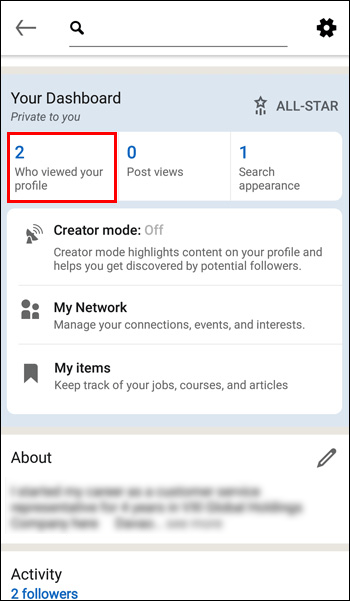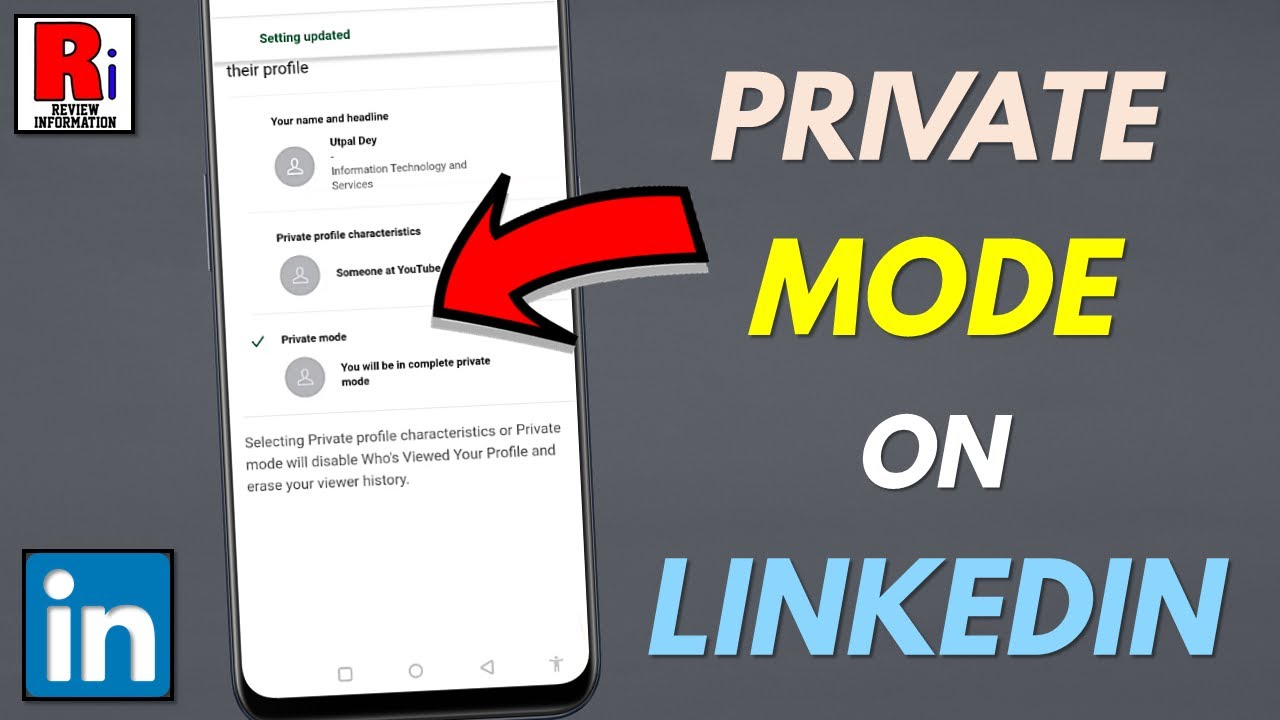If you’ve ever wondered who’s been lurking around your LinkedIn profile, you’re not alone! Many users like to keep tabs on visitors, and it can be quite intriguing to see which industry professionals are interested in your background. But how does this work, especially for those with LinkedIn Premium? Can they truly see who viewed their profiles, and how does anonymity play a role in this? In this post, we'll break down the details, shed some light on privacy features, and explore what it all means for both free and Premium users.
Understanding LinkedIn Premium Features

LinkedIn Premium comes with an array of additional features designed to enhance your networking and job-hunting experience. One of the features that stand out is the ability to see who has viewed your profile. So, how does this work, and what’s different for Premium users compared to the free tier?
When you have a free account, you can see a limited number of users who have viewed your profile—typically just the last five viewers. This gives you a glimpse into who might be interested in your professional experience, but it leaves a lot to the imagination. You can't see detailed statistics or explore further insights without upgrading. Now, let's talk about what happens when you switch to LinkedIn Premium.
With LinkedIn Premium, the benefits multiply. Here’s what you can access:
- Detailed Profile Views: You can view the complete list of people who have visited your profile over the past 90 days. This includes professionals who might be in your industry, recruiters, or potential collaborators.
- Increased Insights: Get access to detailed statistics on profile views, such as how viewers found you and their connection paths.
- Enhanced Networking: The insights can help you understand trends in viewership and tailor your profile to attract the right attention.
However, there's a catch! Although Premium users can see who viewed their profiles, there's still an option for anonymity. If you’re using LinkedIn, you can decide to browse profiles privately. This means if you view someone else's profile without revealing your name, they won't be able to see that you visited. This feature respects user privacy and allows for a more discreet browsing experience.
It’s worth noting that when you choose to browse anonymously, you also lose the ability to see who views your profile. It’s a trade-off between privacy and visibility. If you’re serious about networking or job-hunting, you’ll likely want to keep your profile visibility open. However, if you’re just doing some casual research or want to maintain some distance, the anonymous browsing feature is valuable.
In conclusion, LinkedIn Premium certainly enhances your ability to see who's checking out your profile. But remember, privacy is a two-way street! Whether you're a free user or using Premium features, understanding these dynamics can help you navigate your LinkedIn experience more effectively. It all comes down to how you want to engage with the platform and the level of visibility you're comfortable with.
Also Read This: How to Add Languages to LinkedIn Updating Your LinkedIn Profile with Language Skills
Anonymity and Profile Views on LinkedIn

When it comes to social media platforms, privacy is always a hot topic, especially on professional networks like LinkedIn. One of the features that often raises eyebrows is how LinkedIn handles profile views. If you’re a LinkedIn Premium user, you might be wondering: can you see who viewed your profile when they chose to browse anonymously?
The short answer is: no. Even if you have a LinkedIn Premium account, users who utilize the anonymous browsing mode remain invisible to you. This means that if someone saw your profile while in private mode, you won’t get any details about them—no name, no profile picture, not even their profession. All you will see is a generic indication that someone viewed your profile.
Here’s how it works:
- Private Mode: Users can opt for private mode where their profiles don't get recorded in anyone’s view history. This is ideal for those who prefer a bit of mystery or are job hunting quietly.
- LinkedIn Premium Benefits: With a Premium account, you can see the last 90 days of profile views as well as insights into how people found you. However, anonymous views remain a dark spot in this data.
This feature can be frustrating for many, especially if you’re trying to attract potential employers or clients. You might wonder who’s interested in your profile, but if they chose to remain anonymous, they’ve taken steps to hide their identity.
From a user's standpoint, this duality of visibility is an essential aspect of LinkedIn's user experience. While transparency is vital for building professional networks, the option for anonymity allows individuals to browse without the fear of judgment or unwanted messages.
Remember, if someone views your profile while not in anonymous mode, you, as a LinkedIn Premium user, will see their details, including their name and profile information. This is a crucial aspect for those leveraging LinkedIn for networking, allowing for strategic follow-ups or connection requests.
Also Read This: How to Shorten Your LinkedIn URL: A Simple Method
How LinkedIn Handles Profile View Data
Understanding how LinkedIn handles profile view data can give you clarity about what information is available to you and what remains private. The platform takes user privacy seriously and has implemented various features and settings to handle this data responsibly.
Here’s a breakdown of LinkedIn’s approach:
- Privacy Controls: Users can adjust their privacy settings to determine who can see their profile and how their activity is shared with others. They have the option to view profiles anonymously, which keeps their identity hidden.
- Data Storage: LinkedIn stores data regarding profile views, but respects users’ choices regarding visibility. Thus, even Premium users will not have access to details of anonymous viewers.
- Insights for Visibility: Premium members receive detailed insights into profile views—like job titles and industries involved—but this data excludes anonymous viewers, allowing for targeted networking strategies.
This thoughtful design aims to strike a balance between network growth and individual privacy. LinkedIn provides enough information for users to build connections while allowing others to surf without exposure.
In essence, when you check your profile’s visibility statistics, it’s vital to understand that the data is filtered. You can capitalize on the views you can see but must accept that some individuals prefer to remain in the shadows, and this is part of their right to navigate the platform comfortably.
So, as you interact with LinkedIn, just keep this balance of visibility and anonymity in mind. You never know who’s checking you out, and that’s all part of the game. Stay engaging, stay connected, and leverage the visibility you do have while respecting the privacy choices of others.
Also Read This: How to Download Your LinkedIn Resume: A Step-by-Step Process
5. Impact of Premium Membership on Visibility
LinkedIn Premium membership can significantly change how you engage with the platform and, more importantly, how others engage with you. One of the standout features of Premium is the enhanced visibility it offers. When you upgrade your account, you're not just gaining access to additional functionalities; you're also reaping the benefits of broader exposure.
For example, Premium users can see who viewed their profile in detail. This means you not only get a list of profile visitors, but also insights into their job titles, and where they work. This level of detail is invaluable for networking—knowing who is interested in your profile can open doors for new connections and opportunities.
Moreover, with a Premium subscription, you also have the ability to see extended information on profiles, including people outside your immediate network. This expanded access can be a game-changer if you’re looking to connect with industry leaders or potential job prospects. It’s all about maximizing your visibility and using the insights gained from those views to create valuable networking opportunities.
However, it is essential to note that simply having a Premium membership does not guarantee that you will be seen by everyone. Visibility still depends on how well you optimize your profile. This involves using relevant keywords, having a professional photo, and actively engaging with your network. When your profile is complete and compelling, you naturally become more visible to those searching for talent or connection in your field.
In conclusion, while LinkedIn Premium certainly enhances visibility and provides deeper insights into profile viewers, the real advantage comes from how effectively you leverage these features to build your professional network. Always remember, engagement is the name of the game!
Also Read This: How to Find Hiring Managers on LinkedIn for Job Opportunities
6. Common Myths About LinkedIn Profile Views
As with any online platform, myths and misconceptions tend to circulate, especially regarding profile views on LinkedIn. Let’s debunk some of the most common beliefs that may be influencing your understanding of how visibility works on the site.
- Myth #1: Only Premium Users Can See Who Viewed Their Profile
While it's true that Premium users have access to more detailed insights about their profile viewers, even free accounts can see a limited number of viewers. So, if you’re not ready to spring for a subscription, know that you still have some visibility, although not as extensive. - Myth #2: Anonymous Viewers Can’t Be Seen at All
This one is a little tricky! If a user has their profile set to anonymous, you won’t be able to see their name, but you will still know that someone viewed your profile. The information might simply say “Someone from your network” or “A recruiter.” The key point is you can still gauge interest! - Myth #3: If You View Someone’s Profile, They Will Automatically Know
Not everyone knows this, but if you're a basic user, you can browse profiles without being identified. Just remember, if anonymity is your aim, it's best to adjust your privacy settings before you start viewing others' profiles. - Myth #4: Views Come From Job Seekers Only
Many people believe profile views are predominantly from individuals seeking jobs. However, professionals across various sectors—from recruiters to business partners or even potential clients—could be checking out your profile for various reasons.
In summary, understanding the truth behind these common myths is crucial for using LinkedIn effectively. Don’t let misconceptions dictate how you navigate this powerful networking tool. Stay informed, and you’ll be well-equipped to enjoy all that LinkedIn has to offer!
Conclusion: What You Should Know About Profile Anonymity
Profile anonymity on LinkedIn can be a double-edged sword. While it provides users with the ability to browse profiles without leaving a trace, understanding the implications of this feature is crucial. Here are some key points to consider:
- Premium vs. Free Users: Premium users can see who viewed their profile, but they can also toggle their profile viewing options to remain anonymous.
- Anonymity Settings: Both Premium and free users have control over their privacy settings. They can choose to view profiles in various modes:
- Full Profile Name
- Job Title and Company
- Anonymous Viewing
- Impact on Networking: Anonymous viewing can hinder connections. If someone views your profile anonymously, they are not identifiable, which might prevent networking opportunities.
- Potential Misuses: Some users may exploit the anonymity feature to stalk or collect data without reciprocating transparency.
- Privacy Considerations: Always weigh the desire for privacy against potential professional opportunities that could be missed by not being visible to others.
In summary, while LinkedIn offers flexibility concerning profile anonymity, users should carefully consider how these settings can affect networking and relationship-building on the platform. Being aware of how you present yourself online can enhance your professional interactions and open up new avenues for connections.
 admin
admin








